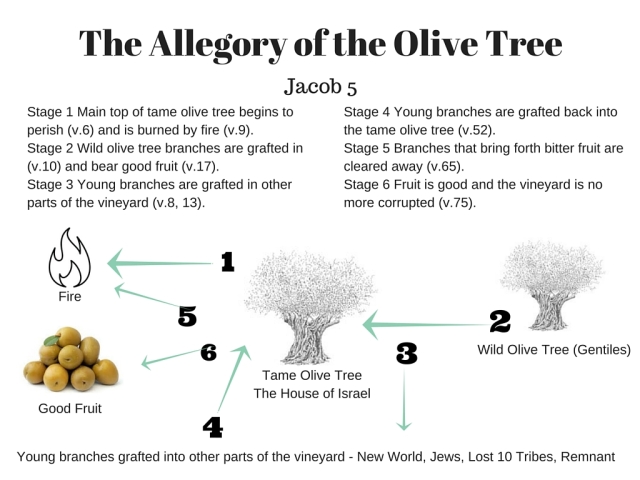The longest allegory in scripture is Zenos’ allegory of the olive, which is found in Jacob 5. In Jacob 5:3, Zenos explains to his hearers that the tame olive tree represents the house of Israel. From this interpretation, we can draw some conclusions about the other symbols in Zenos’ allegory. For example, the young branches taken away from the olive tree most likely represent the inhabitants of the Americas, the Jews, the lost ten tribes, and a remnant of the house of Israel. The wild olive tree could represent the Gentiles and other nations of the earth that are not of the house of Israel.
The top part of this chart denotes the six main stages that Zenos discusses in his allegory: 1) the decaying of the top of the tree, 2) the grafting in of the wild tree, 3) the planting of the young branches into the other parts of the vineyard, 4) the returning of the branches to the main tree, 5) the bitter fruit burned by fire, and 6) the good fruit as it is gathered by the servants and deposited in a safe place. These 6 stages are represented graphically on the bottom part of the chart as well.

